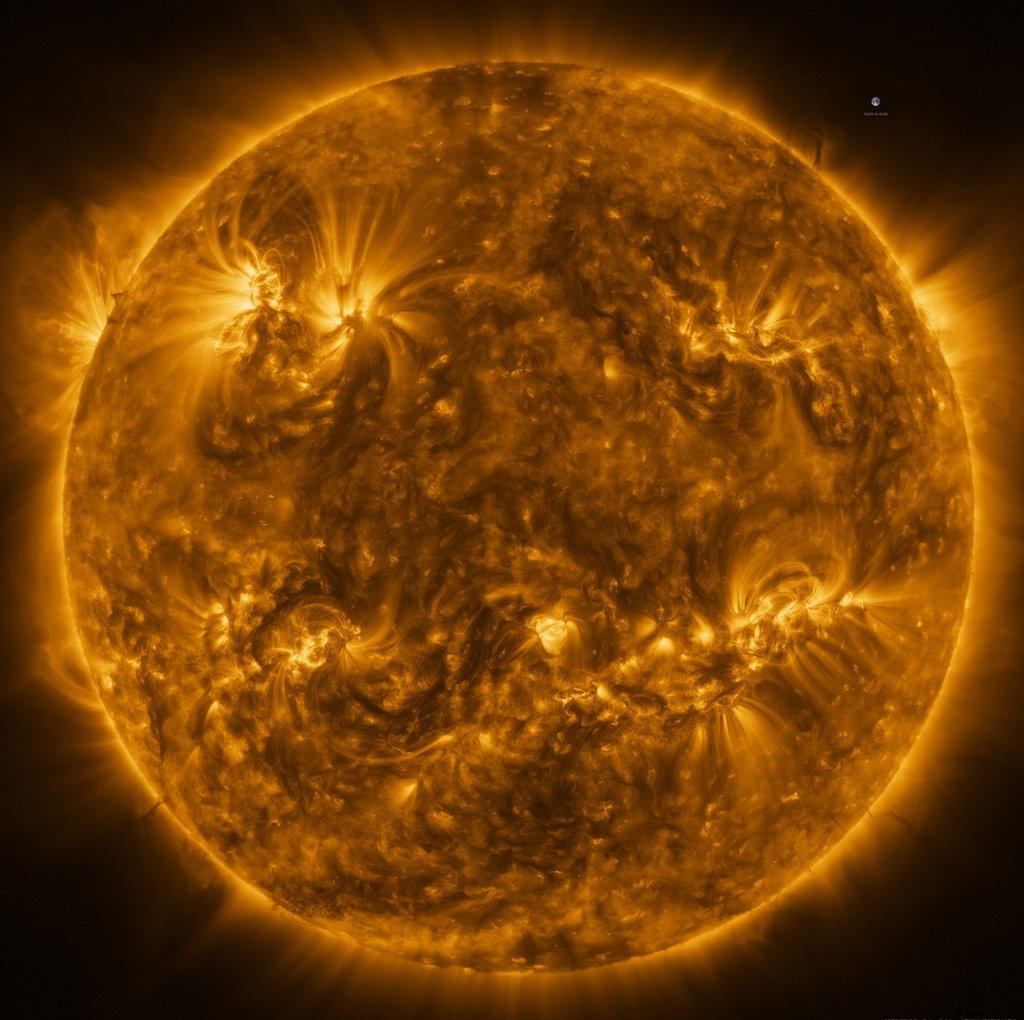Solar Orbiter: Satellite captures closest picture ever of the Sun
- Published
- comments

The Solar Orbiter probe has captured the closest picture ever taken of the Sun!
This might look like a picture of a fiery new planet, but it's actually the closest and clearest picture that's ever been taken of the Sun!
The image was taken earlier this month by the European Space Agency's (ESA) Solar Orbiter satellite, which was launched back in February 2020.
The probe is currently on a three year mission to get to the sun, a task far too difficult and dangerous for human astronauts.
Once it gets there, it's hoped the Solar Orbiter will give us the first ever views of the top and bottom of the Sun, as well as help us to understand the connections between the Sun and Earth.
Artist's impression of how the Solar Orbiter might look flying close to the Sun
The images were taken when the Solar Orbiter was at a distance of around 75 million kilometres from the Sun - half way between Earth and the star.
This is just one of Solar Orbiter's first close passes of the Sun, with many more flybys and pictures planned in the future as it travels closer and closer to the star in the coming years.
Don't ever look directly at the sun - you could seriously damage your eyes.
Nasa says the Solar Orbiter has been designed to experience sunlight 13 times more intense than that which we feel on Earth.
To keep cool, it has a shield to help protect it from the full intensity of the Sun, and it's also got radiators that pass heat from the probe back out into space.
The sun is that big - you could fit over a MILLION Earths inside the Sun!
WATCH: All you need to know about the Solar Orbiter
Caroline Harper from the the UK Space Agency said, "Observing the Sun in such detail will allow scientists to find the origins of powerful eruptions and other events on the Sun's surface and in its atmosphere, to better understand how they contribute to space weather.
""We look forward to many more exciting moments as the spacecraft continues to pass the Sun over the coming years."
- Published23 October 2021
- Published3 October 2014
- Published30 October 2020
